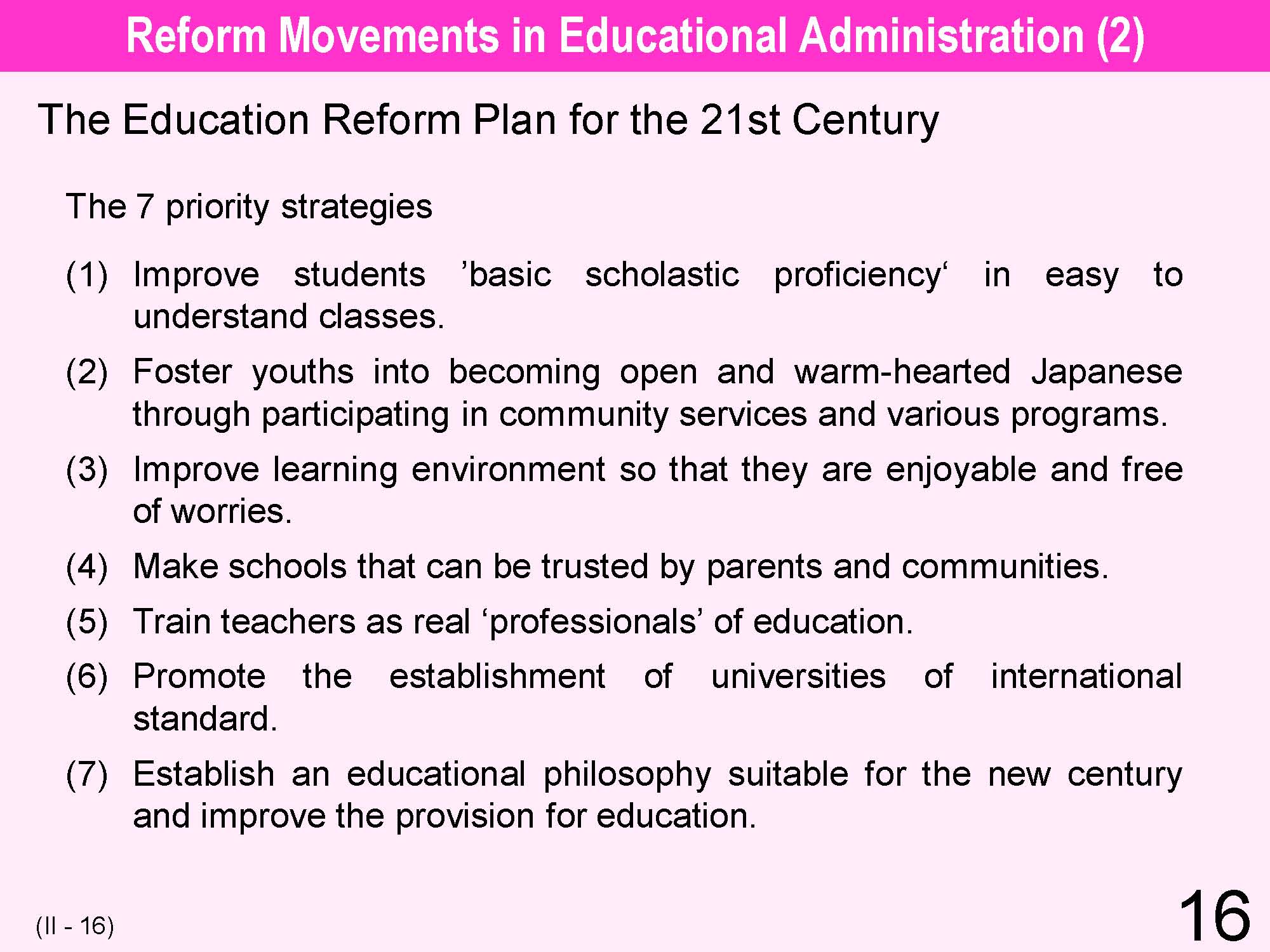| 16 | gII Japanese Educational Administration and Financeh | Previous | Next | JAPANESE |
|---|---|---|---|---|
 |
||||
| The progress of the seven priority strategies and their position in the overall Japanese educational policy are under discussion and review. Key aspects are as follows:
(1) Increase in the number of teachers capable of providing small-group guidance, such as the 20 students per class system for fundamental subjects in public elementary schools and lower secondary schools. (2) Undertake decisions by the prefectural boards of education to set up exceptional standards regarding class size which fall below that of the average determined by the state. (40 students per class) Ë Improve studentsf basic scholastic proficiency ein easy to understand classesf. @ (3) Establish the eChildrenfs Dream Fundf and implement programs (a) for children to experience nature, to conduct hands-on activities such as volunteer work (b) of subsidizing childrenfs book-reading activities such as book clubs Ë Enhance various hands-on and reading activities in the community. (4) Diversify the composition of members of the boards of education and recruitment of parents. Open meetings of the boards of education to the public. Provide greater discretion for principals to transfer school personnel. Ë activate boards of education. Transfer incompetent teachers to a different job. Ë Take appropriate measures on incompetent teachers The figure on http://www.mext.go.jp/a_menu/shougai/21plan/main_b2.htm or @@@http://www.mext.go.jp/a_menu/shougai/21plan/p5.htm, @@@http://www.mext.go.jp/b_menu/soshiki2/07.htm |
||||
Please send your comments and concerns here
kamada@criced.tsukuba.ac.jp
Center for Research on International Cooperation in Educational Development(CRICED) University of Tsukuba
1-1-1, Tennodai, Tsukuba-shi, IBARAKI
305-857, JAPAN